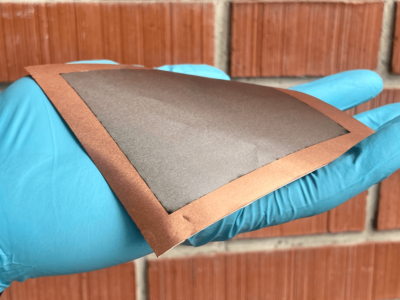
Electronic module protects autonomous cars from power failure
The energy supply in autonomous electric vehicles is guaranteed by two sources: In addition to the high-voltage battery, there is a 12V battery that supplies the car in idle mode or in high load situations when the vehicle is in motion. Safety-critical components such as brakes and steering can thus be connected to two energy paths. But what happens if a fault occurs in one of them?
In today’s on-board network architectures of highly and fully automated vehicles, it is common practice to isolate the affected area by means of an overload fuse – in the past usually a single-use fuse, today increasingly implemented as an electronic switching element. This design, however, results in the affected component being switched off completely in the event of a fault. For highly and fully automated driving, such a procedure is only possible if all components and the vehicle electrical system are redundant, i.e. duplicated – an expensive approach, especially in the case of the vehicle electrical system, which also requires additional space and increases the vehicle weight. In order to ensure highly reliable safety while driving even without a second on-board power supply system, researchers at Fraunhofer IZM in the HiBord project, together with partners from industry and the Fraunhofer Institute for Integrated Systems IISB, developed a disconnecting element that switches off the faulty on-board power supply system component and still guarantees the supply of safety-relevant components.
The researchers see this as a significant improvement in safety during autonomous driving. Phillip Arnold, research associate at Fraunhofer IZM, explains: “With current systems, undervoltage during driving can lead to an abrupt and uncontrolled failure of the entire electronics, including the steering and braking systems. Especially at high speeds, this is an intolerable risk. Thanks to our new module, part of the on-board network continues to function and the fully automated car has sufficient time to drive the passengers to a safe area, e.g. to a hard shoulder or parking lot”.
The newly developed isolating element is equipped with 16 MOSFET switches and can conduct up to 180A. If this threshold value is exceeded, for example in the event of a short circuit, the electrical switch opens and disconnects the current. Since the MOSFET switches can handle loads of up to 300A, they are operated far below their load limit and therefore have a significantly longer service life than previous solutions.
In tests, the researchers created artificial short circuits. The results showed that the electronic module can reliably insulate up to a current of 700 amperes without the short circuit propagating. The switching speed also has clear advantages over the conventional principle: While a conventional fuse needs about 20 milliseconds to blow, the isolating element detects a fault within 10 microseconds and trips within 300 microseconds. This makes it over 60 times faster than current fuse systems.
The module was successfully tested in an electric BMW i3 demonstrator and is designed in such a way that it can be used in any electric vehicle.
More information: https://www.izm.fraunhofer.de/en.html
https://www.iisb.fraunhofer.de/
Related articles:
How antivibration capacitors transform the reliability of ECUs
Battery Stack Monitor Maximizes Performance of Li-Ion Batteries in Hybrid and Electric Vehicles
Bosch driverless e-Shuttle is fault tolerant
 If you enjoyed this article, you will like the following ones: don't miss them by subscribing to :
eeNews on Google News
If you enjoyed this article, you will like the following ones: don't miss them by subscribing to :
eeNews on Google News




